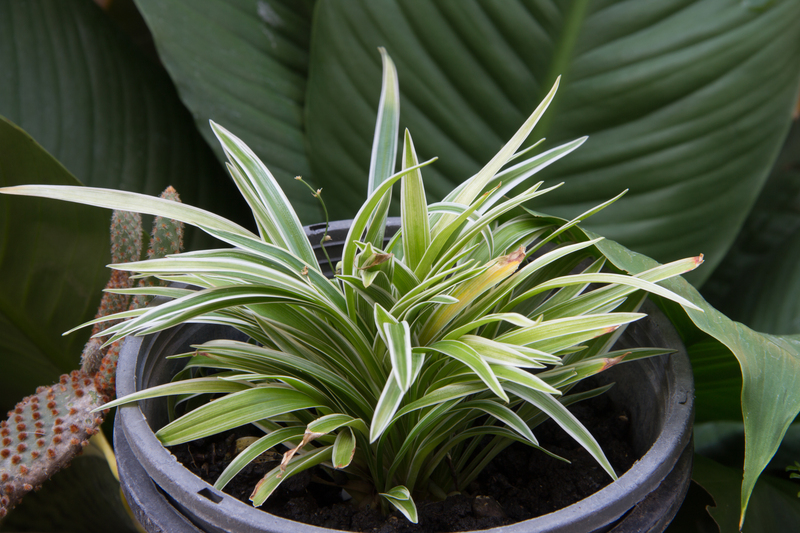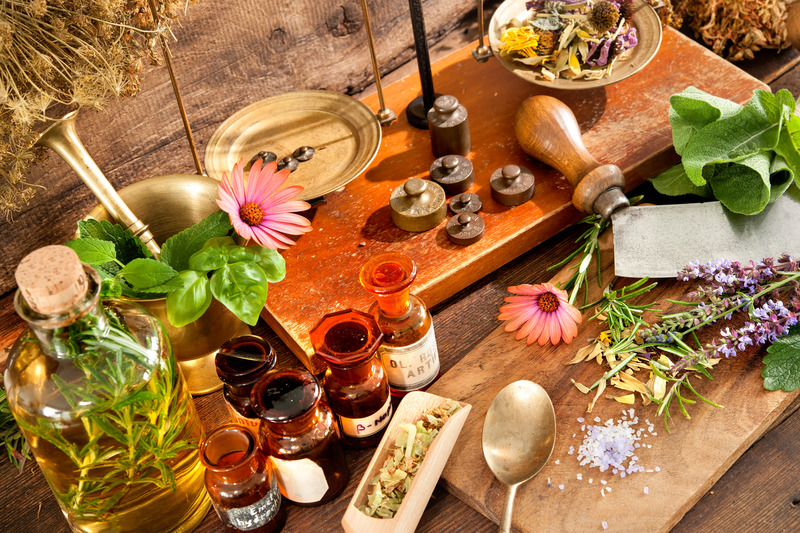From Balcony to Backyard: Creating Your Ideal Herb Retreat
Posted on 14/08/2025
From Balcony to Backyard: Creating Your Ideal Herb Retreat
Are you dreaming of a lush, aromatic herb retreat right where you live? Whether you have a cozy balcony or a sprawling backyard, you can create the ideal sanctuary filled with your favorite herbs. Growing herbs at home not only elevates your meals but also nourishes your mind and body with natural beauty and fragrance. In this comprehensive guide, we'll walk you through everything you need to know to create an inviting, productive herb space -- from planning and planting to nurturing and harvesting.
Why Create a Personal Herb Retreat?
The modern pace of life leaves little room for nature's tranquility. Crafting a herb retreat offers more than just delightful flavors for your dishes. It provides a peaceful refuge, encourages sustainability, and connects you to the rhythm of the seasons.
- Culinary Rewards: Homegrown herbs are fresher and more flavorful than store-bought options.
- Wellness Benefits: Many herbs carry medicinal properties, aiding everything from digestion to relaxation.
- Eco-friendly: Growing your own herbs reduces packaging waste and food miles.
- Personal Sanctuary: The act of gardening soothes the soul and beautifies your environment.

Step 1: Assess Your Space -- Balcony or Backyard?
Before you begin your journey to a thriving herb haven, start with a thorough assessment of your available area. Maximizing your space is essential whether you're working with a compact balcony, a small patio, or a generous backyard plot.
Small Balconies
- Sunlight: Observe your balcony's sunlight exposure. Most herbs require at least 4-6 hours of direct sunlight daily.
- Containers: Use pots, window boxes, or hanging planters to optimize vertical space.
- Accessibility: Choose lightweight, moveable containers for flexibility as seasons change.
- Protection: Balconies are prone to wind and temperature fluctuations. Use screens or group plants together for shelter.
Backyards and Patios
- Garden Beds: Raised beds or in-ground plots are ideal for sprawling herb gardens.
- Dedicated Plots: Designate a sunny corner as your special "herb retreat." Add a bench or bistro table for relaxation.
- Edging and Pathways: Use pavers, mulch, or gravel to define your herb garden and improve aesthetics.
- Water Source: Ensure easy access to water, especially during hot summer months.
Step 2: Choosing the Right Herbs for Your Retreat
The heart of your ideal herb retreat lies in the selection of herbs you wish to grow. Beginners often find great success with classic culinary herbs, while seasoned gardeners might experiment with medicinal or exotic varieties.
- Basil: Loves warmth and sun, perfect for summer salads and pesto.
- Mint: Fragrant and refreshing, best kept in containers to control its spread.
- Rosemary: Hardy and drought-tolerant, adds flavor and fragrance.
- Thyme: Low-growing, ideal for borders and containers, attracts pollinators.
- Parsley: Biennial, enjoys partial shade, loaded with nutrients.
- Cilantro: Grows quickly, prefers cooler weather.
- Sage: Velvety leaves, essential for autumn dishes and teas.
- Chives: Edible flowers, easy to grow, and perfect for snipping over dishes.
Consider combining culinary and medicinal herbs -- such as lavender, chamomile, or lemon balm -- to create a multi-sensory oasis.
Step 3: Designing Your Herb Retreat
A well-planned layout enhances beauty and function. Design your dream herb space to suit your lifestyle, preferences, and natural environment.
Balcony Herb Retreat Ideas
- Vertical Gardens: Install trellises or wall-mounted planters to save floor space and add visual appeal.
- Tiered Shelving: Layer containers to facilitate drainage, sunlight, and easy access.
- Hanging Baskets: Grow trailing herbs such as oregano or creeping thyme in elevated planters.
- Herb Ladder: Repurpose a wooden ladder with planks to create a stand for potted herbs.
Backyard Herb Retreat Designs
- Formal Beds: Arrange herbs in geometric patterns, like knots or spirals, for a classic look.
- Mixed Borders: Blend herbs with flowers and vegetables to attract bees and repel pests.
- Herb Spirals: Construct a spiral mound with rocks or bricks, allowing different microclimates for diverse herb varieties.
- Outdoor Living: Incorporate comfortable seating, fairy lights, and garden art to create a cozy escape.
Step 4: Essential Tips for Planting and Care
Maintaining a flourishing herb sanctuary requires attention to soil, watering, and routine care. Here's how to ensure your herbs thrive:
- Well-Draining Soil: Most herbs dislike "wet feet." Use a blend of potting mix, compost, and perlite for containers.
- Consistent Watering: Let soil dry slightly between waterings. Avoid soggy roots, especially for Mediterranean herbs like rosemary and thyme.
- Sunlight: Position your herbs where they receive adequate direct light. South-facing spots are best for most herbs.
- Pruning: Regularly pinch back stems to encourage bushy growth and avoid premature flowering (bolting).
- Fertilizing: Light feeding with organic fertilizer every 4-6 weeks boosts growth. Avoid over-fertilizing, which can reduce flavor intensity.
- Companion Planting: Some herbs deter pests and can be grown alongside veggies (e.g., basil with tomatoes).
Step 5: Dealing with Common Challenges
Even the most idyllic herb retreats encounter a few hurdles. Here are swift solutions to the most common herb gardening problems:
Pests and Disease
- Encourage beneficial insects by planting flowers nearby.
- Hand-pick pests off leaves or rinse with a strong jet of water.
- Try neem oil spray or insecticidal soap for organic control.
- Avoid overcrowding to reduce humidity and disease risk.
Weather Extremes
- Move container gardens indoors or into shade during heatwaves.
- Mulch soil in garden beds to retain moisture and regulate temperature.
- Protect delicate herbs from frost with cloches or row covers.
Overgrowth and Maintenance
- Prune regularly to encourage compact, lush growth.
- Harvest often -- clipping herbs spurs new shoots.
- Divide perennial herbs like chives and mint every few years to invigorate growth.
Step 6: Harvesting and Using Your Homegrown Herbs
A flourishing herb retreat rewards you with armfuls of fragrant foliage to use fresh, dried, or preserved. To enjoy the best flavor and longevity:
- Morning Harvest: Pick herbs in the morning after dew dries for optimal oils and taste.
- Pinch, Don't Pull: Use sharp scissors to snip sprigs, avoiding damage to the plant.
- Freeze or Dry: Preserve excess by air-drying, dehydrating, or freezing in ice cube trays with olive oil.
- Infusions and Teas: Experiment with herbal teas, vinegars, and infused oils from your bounty.
- Decor and Gifts: Dried bundles, wreaths, or sachets make beautiful, fragrant gifts for friends and family.
Step 7: Enhancing the Retreat Experience
Your personal herb garden is more than a food source -- it's a place to retreat, unwind, and gather inspiration. Boost the atmosphere and functionality by:
- Adding Seating: Place a small table and chairs or a garden bench for quiet reading or tea time amidst the herbs.
- Soft Lighting: Solar-powered lanterns and strings of fairy lights create an enchanting evening ambiance.
- Art and Decor: Garden sculptures, wind chimes, and painted pots inject personality and joy.
- Sensory Elements: Plant lavender and lemon balm for aromatic stress relief; include a water feature for gentle sounds.
- Educational Value: Label your herbs with creative markers to learn plant names and uses.

Herb Retreats for Every Lifestyle
No matter your available space or level of experience, you can enjoy the pleasures of a thriving herb getaway:
- Urban dwellers can create stunning herb displays in tiny apartments, on windowsills, or rooftops.
- Families with backyards can dedicate themed sections--pizza garden, tea garden, or pollinator paradise.
- Busy professionals may prefer low-maintenance, drought-tolerant herbs for year-round greenery and ease.
Conclusion: Start Your Herb Garden Retreat Now
From balcony to backyard, creating your ideal herb retreat is a rewarding journey for all senses. By selecting the right herbs, optimizing your space, and adding personal touches, you'll cultivate not only lush greenery but also a daily escape for wellness, flavor, and joy.
Ready to begin your own herb sanctuary? Gather your pots, seeds, and a bit of inspiration -- and transform your space into a living retreat you'll cherish for seasons to come.
Frequently Asked Questions about Herb Retreats
- What are the easiest herbs to grow for beginners?
Basil, chives, mint, and parsley are easy to start and flourish with basic care. - Can I grow herbs year-round?
With indoor pots and sufficient light, many herbs can be harvested even in winter. - What herbs grow well together?
Mediterranean herbs (rosemary, thyme, oregano, sage) thrive under similar conditions. Avoid planting mint near others as it can overtake its neighbors.
Grow your own herb retreat today -- your senses (and recipes) will thank you!



